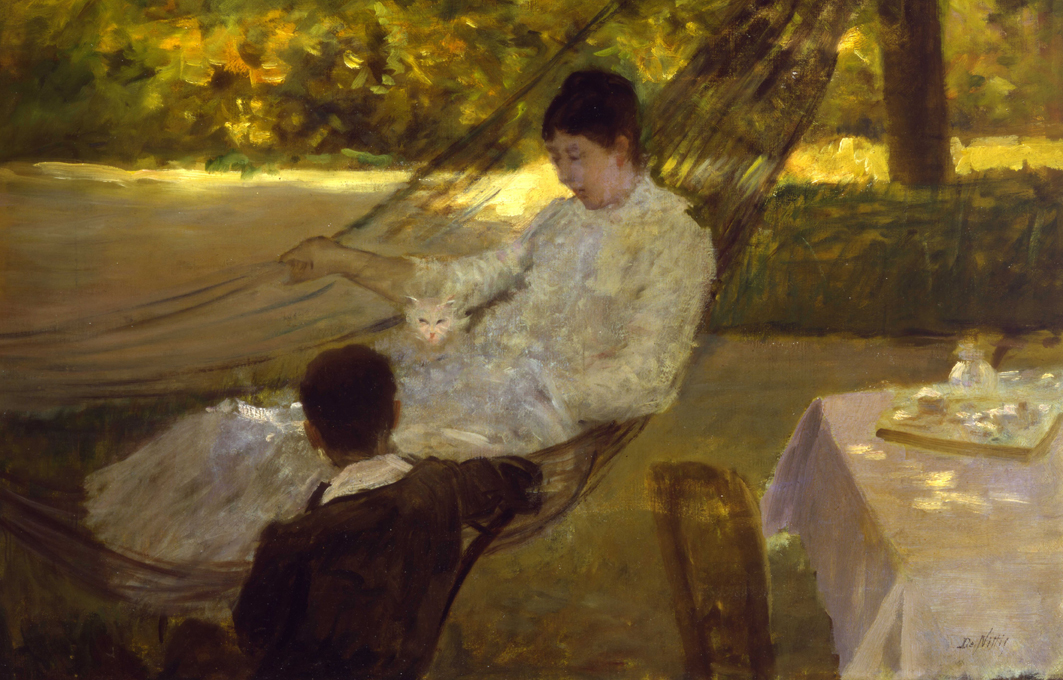
Click here to view image
The hammock
Luigi Frugone 1953 Genova - legato
De Nittis, Giuseppe
1860 - 1884 - XIX
GAM 1533
Unità di misura: cm; Altezza: 42.2; Larghezza: 65
olio su tela
The work is part of a group of paintings – the other two versions with the same subject and the painting ‘Breakfast in the Garden’ are in the Municipal Art Gallery Museum in Barletta – which the painter dedicated to his family, his wife Léontine Gruville and his son Jacques. Struck down suddenly by a cerebral haemorrhage on 21 August 1884, he left the Genoese version among his last pictorial testimonies. The work is a sort of variation on the more famous ‘Breakfast in the Garden’ exhibited at the Paris Salon in 1884. In ‘The Hammock’, the brush builds the image with broad strokes of colour, lingering on certain details: 'the cat's face in Léontine's lap, the glint of glassware on the tray, the gathering of light in the background behind the woman's face' (Monti in Giuseppe De Nittis 1864-1884, 1990). If the work is compared with its namesake in the Museum of Barletta, where the two figures are framed from a slightly raised viewpoint, in this canvas the artist retains greater compositional ease, like a rhythm stretched over the length of the suspended, swaying seat, while the light filters through the green like a swarm that seems to lift flakes of mother-of-pearl on the dress of the reclining woman. The scene is probably set in the garden of De Nittis' new home, purchased in 1880 and located near Avenue de Villiers, a residential neighbourhood that was fashionable among artists at the time. The artist pauses to contemplate his wife and son, first at the table and then on the hammock in a relaxed conversation. The woman is rocked by the movement of the hammock, holding a white kitten in her lap. De Nittis focuses his attention on the reflections of the sun filtering through the vegetation onto the tablecloth and household objects; the varied position of a chair and the shadows marked by the passing of time also catch the eye. The space containing the figures is vast and bright, dominated by a wide range of greens.




